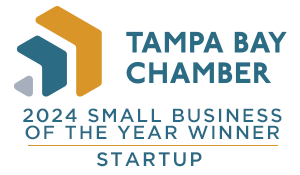In the fast-paced world of business, achieving short-term profitability is important, but sustaining that profitability over the long term is the ultimate goal. Long-term profitability ensures that your business not only survives but thrives, adapting to market changes, seizing growth opportunities, and maintaining a competitive edge.
In this blog, we’ll explore key strategies that can help your business achieve sustained profitability. These strategies focus on building a strong financial foundation, fostering innovation, and creating a culture of continuous improvement—elements that are critical for long-term success.
1. Diversify Revenue Streams
Relying too heavily on a single product, service, or market can expose your business to significant risk. Diversifying your revenue streams is a powerful strategy for achieving sustained profitability.
- Expand Product and Service Offerings: Consider introducing new products or services that complement your existing offerings. This can help attract new customers and increase the lifetime value of your current customer base.
- Enter New Markets: Explore opportunities to enter new geographic or demographic markets. This might involve expanding into international markets, targeting a new customer segment, or developing partnerships with other businesses.
- Develop Recurring Revenue Models: Recurring revenue streams, such as subscription services or maintenance contracts, provide a steady income flow and reduce dependency on one-time sales.
2. Invest in Innovation
Innovation is a key driver of long-term profitability. By continually improving your products, services, and processes, you can stay ahead of the competition and meet evolving customer needs.
- Encourage a Culture of Innovation: Foster an environment where employees are encouraged to share new ideas and experiment with innovative solutions. This might involve creating cross-functional teams, hosting innovation workshops, or establishing an internal innovation fund.
- Invest in Research and Development (R&D): Allocate resources to R&D to develop new products, enhance existing offerings, and explore emerging technologies. Staying on the cutting edge can help you capture new markets and maintain a competitive advantage.
- Leverage Technology: Embrace new technologies that can improve efficiency, reduce costs, and enhance the customer experience. This might include adopting automation tools, implementing advanced data analytics, or exploring artificial intelligence (AI) applications.
3. Build Strong Customer Relationships
Customer loyalty is essential for sustained profitability. By building strong relationships with your customers, you can increase customer retention, reduce churn, and generate more repeat business.
- Focus on Customer Experience: Provide exceptional customer service and create memorable experiences that keep customers coming back. This might involve personalized interactions, loyalty programs, or proactive communication.
- Gather and Act on Customer Feedback: Regularly solicit feedback from your customers to understand their needs and expectations. Use this feedback to improve your products, services, and customer support.
- Develop a Customer-Centric Culture: Empower your employees to go above and beyond in serving customers. A customer-centric culture ensures that every decision and action is aligned with delivering value to your customers.
4. Optimize Cost Management
Effective cost management is crucial for maintaining healthy profit margins over the long term. By optimizing your cost structure, you can ensure that your business remains profitable even during challenging economic conditions.
- Implement Lean Management Practices: Adopt lean management principles to eliminate waste, streamline processes, and improve efficiency. This might involve process reengineering, value stream mapping, or adopting just-in-time inventory practices.
- Review and Adjust Pricing Strategies: Regularly evaluate your pricing strategies to ensure they reflect market conditions, costs, and customer value. Adjusting prices in response to changes in demand, competition, or costs can help maintain profitability.
- Negotiate with Suppliers: Build strong relationships with your suppliers and negotiate favorable terms. This can include bulk purchasing discounts, extended payment terms, or collaborative cost-saving initiatives.
5. Develop a Long-Term Financial Plan
A comprehensive financial plan provides the roadmap for achieving sustained profitability. It aligns your financial goals with your business strategy and ensures that you’re prepared for future growth and challenges.
- Set Clear Financial Goals: Establish long-term financial goals that reflect your business’s vision and mission. These goals should include revenue targets, profit margins, and return on investment (ROI) benchmarks.
- Create a Detailed Budget: Develop a budget that supports your financial goals and provides a framework for managing expenses. Regularly review and adjust the budget to reflect changes in the business environment.
- Plan for Contingencies: Prepare for unexpected challenges by building a financial buffer, such as a cash reserve, and developing contingency plans. This ensures that your business can weather economic downturns, market disruptions, or unforeseen expenses.
6. Foster a Culture of Continuous Improvement
Continuous improvement is the cornerstone of sustained profitability. By fostering a culture where employees are encouraged to identify opportunities for improvement and implement changes, you can drive ongoing efficiency gains and maintain a competitive edge.
- Implement Continuous Improvement Programs: Establish programs like Six Sigma or Kaizen to systematically identify and address inefficiencies. These programs can help streamline processes, reduce waste, and improve quality.
- Encourage Employee Involvement: Empower employees at all levels to contribute to continuous improvement efforts. This might involve suggestion programs, team-based problem-solving sessions, or performance incentives for implementing successful improvements.
- Monitor Progress and Celebrate Successes: Regularly track the impact of continuous improvement initiatives and celebrate the successes with your team. Recognizing achievements reinforces the importance of continuous improvement and motivates employees to keep striving for excellence.
Achieving Long-Term Profitability
Sustained profitability doesn’t happen by accident—it requires a strategic approach that includes diversifying revenue streams, investing in innovation, building strong customer relationships, optimizing cost management, developing a long-term financial plan, and fostering a culture of continuous improvement.
However, achieving and maintaining long-term profitability can be challenging without the right expertise. At The William Stanley Group, we specialize in helping businesses like yours develop and execute strategies for sustained profitability. Our team can work with you to create a customized plan that aligns with your long-term goals and supports your business’s growth.
Ready to ensure your business’s long-term profitability? Contact us today to schedule a consultation and learn how we can help your business thrive for years to come.




